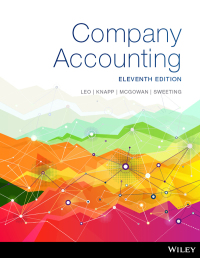Question
Analysis and Interpretation of ROE and RNOA with No Noncontrolling Interest Balance sheets and income statements for Johnson & Johnson follow. Refer to these financial
Analysis and Interpretation of ROE and RNOA with No Noncontrolling Interest Balance sheets and income statements for Johnson & Johnson follow. Refer to these financial statements to answer the requirements.
| JOHNSON & JOHNSON, INC. Consolidated Statement of Earnings | |||
|---|---|---|---|
| Years Ended ($ millions) | 2008 | 2007 | 2006 |
| Sales to customers | $63,747 | $61,095 | $53,324 |
| Cost products sold | 18,511 | 17,751 | 15,057 |
| Gross profit | 45,236 | 43,344 | 38,267 |
| Selling, marketing and administrative expenses | 21,490 | 20,451 | 17,433 |
| Research expense | 7,577 | 7,680 | 7,125 |
| Purchase in-process research and development | 181 | 807 | 559 |
| Restructuring | -- | 745 | -- |
| Interest (income) | (361) | (452) | (829) |
| Interest expense, net of portion capitalized | 435 | 296 | 63 |
| Other (income) expense, net | (1,015) | 534 | (671) |
| 28,307 | 30,061 | 23,680 | |
| Earnings before provision for taxes on income | 16,929 | 13,283 | 14,587 |
| Provision for taxes on income | 3,980 | 2,707 | 3,534 |
| Net earnings | $ 12,949 | $ 10,576 | $ 11,503 |
| JOHNSON & JOHNSON, INC. Consolidated Balance Sheets | ||
|---|---|---|
| ($ millions) | December 28, 2008 | December 30, 2007 |
| Assets | ||
| Cash and cash equivalents | $10,768 | $7,770 |
| Marketable securities | 2,041 | 1,545 |
| Accounts receivable trade, net | 9,719 | 9,444 |
| Inventories | 5,052 | 5,110 |
| Deferred taxes on income | 3,430 | 2,609 |
| Prepaid expenses and other receivables | 3,367 | 3,467 |
| Total current assets | 34,377 | 29,945 |
| Marketable securities, noncurrent | 4 | 2 |
| Property, Plant and equipment, net | 14,365 | 14,185 |
| Intangible assets, net | 13,976 | 14,640 |
| Goodwill, net | 13,719 | 14,123 |
| Deferred taxes on income | 5,841 | 4,889 |
| Other assets | 2,630 | 3,170 |
| Total assets | $ 84,912 | $ 80,954 |
| Liabilities and Shareholders' Equity | ||
| Loans and notes payable | $3,732 | $2,463 |
| Accounts payable | 7,503 | 6,909 |
| Accrued liabilities | 5,531 | 6,412 |
| Accrued rebates, returns and promotions | 2,237 | 2,318 |
| Accrued salaries, wages and commissions | 1,432 | 1,512 |
| Accrued taxes on income | 417 | 223 |
| Total current liabilities | 20,852 | 19,837 |
| Long-term debt | 8,120 | 7,074 |
| Deferred taxes on income | 1,432 | 1,493 |
| Employee related obligations | 7,791 | 5,402 |
| Other liabilities | 4,206 | 3,829 |
| Total liabilities | 42,401 | 37,635 |
| Shareholders' equity | ||
| Preferred stock-without par value (authorized and unissued 2,000,000 shares) | -- | -- |
| Common stock-par value $1.00 per share | 3,120 | 3,120 |
| Accumulated other comprehensive income | (4,955) | (693) |
| Retained earnings | 63,379 | 55,280 |
| 61,544 | 57,707 | |
| Less: common stock held in treasury, at cost | 19,033 | 14,388 |
| Total Shareholders' equity | 42,511 | 43,319 |
| Total liability and shareholders' equity | $ 84,912 | $ 80,954 |
(a) Compute net operating profit after tax (NOPAT) for 2008. Assume that the combined federal and statutory rate is: 37.1%.
Treat other (income) expense, net as non-operating. Round your answer to the nearest whole number. 2008 NOPAT = $Answer
(b) Compute net operating assets (NOA) for 2008 and 2007. 2008 NOA = $Answer 2007 NOA = $Answer
(c) Compute RNOA, net operating profit margin (NOPM) and net operating asset turnover (NOAT) for 2008. Do not use NOPM x NOAT to caculate RNOA. (Do not round until your final answers. Round answers to two decimal places.) 2008 RNOA = Answer% 2008 NOPM = Answer% 2008 NOAT = Answer
(d) Compute net nonoperating obligations (NNO) for 2008 and 2007. Confirm the relation: NOA = NNO + Stockholders' equity. 2008 NNO = $Answer 2007 NNO = $Answer
(e) Compute return on equity (ROE) for 2008. (Round your answers to two decimal places. Do not round until your final answer.) 2008 ROE =Answer%
(f) Infer the nonoperating return component of ROE for 2008. (Use answers from above to calculate. Round your answer to two decimal places.) 2008 nonoperating return = Answer%
(g) Comment on the difference between ROE and RNOA. Which of the following statements best describes the inference from the difference between JNJ's ROE and RNOA?
ROE>RNOA implies that JNJ's equity has grown faster than its NOA. The faster increase of equity compared to NOA allows higher dividends to be paid to JNJ's stockholders.
RNOA greater than ROE implies that JNJs stockholders are funding a significant amount of liquidity in the form of cash and investments in marketable securities.
ROE>RNOA implies that JNJ has taken on too much financial leverage. The high financial leverage results in a higher interest rate on JNJ's debt, therefore the cost of debt is greater.
ROE>RNOA implies that JNJ has increased its financial leverage during the period. The increase in financial leverage also increases JNJ's risk, therefore increasing the expected ROE by JNJ's stockholders.
Step by Step Solution
There are 3 Steps involved in it
Step: 1

Get Instant Access to Expert-Tailored Solutions
See step-by-step solutions with expert insights and AI powered tools for academic success
Step: 2

Step: 3

Ace Your Homework with AI
Get the answers you need in no time with our AI-driven, step-by-step assistance
Get Started


